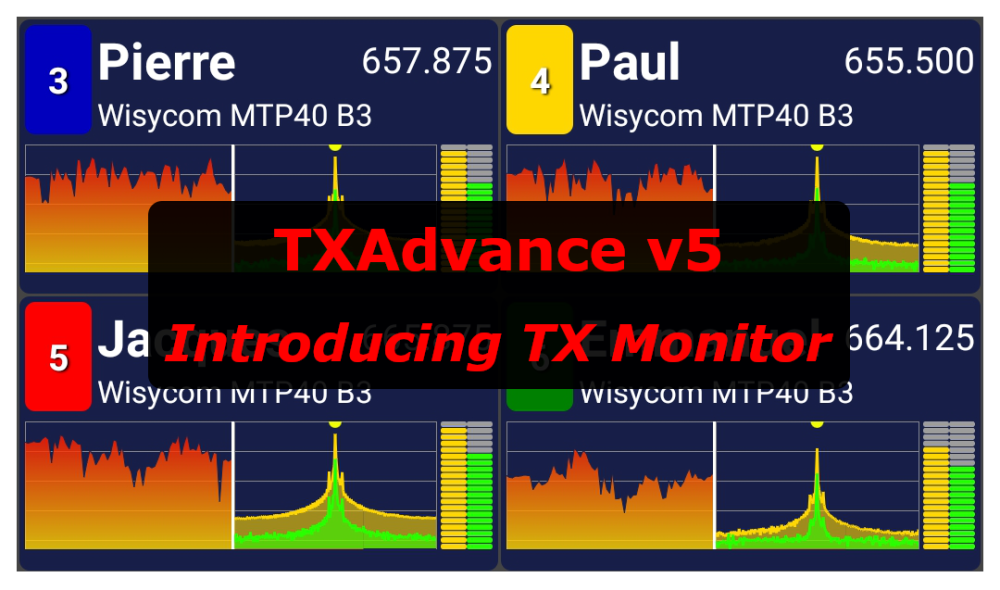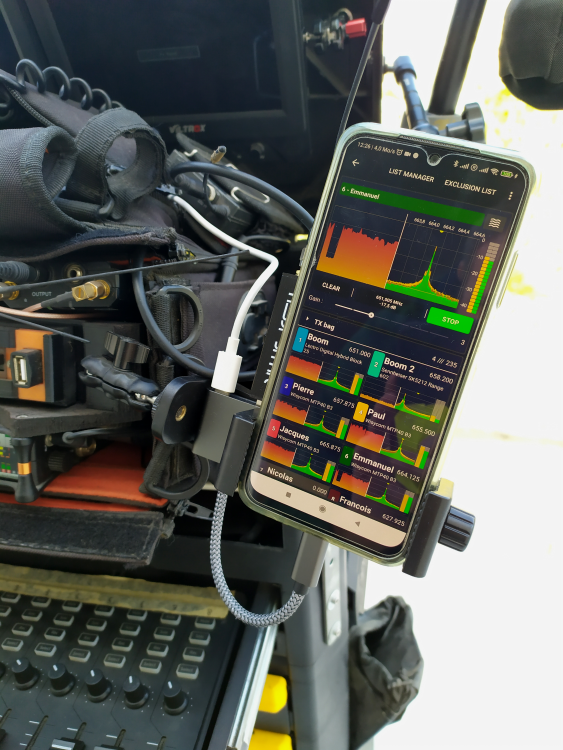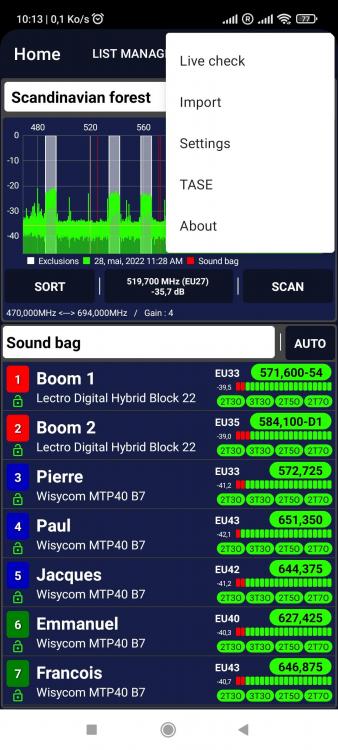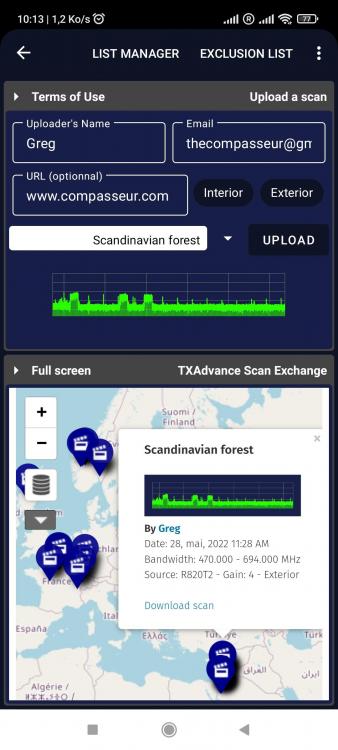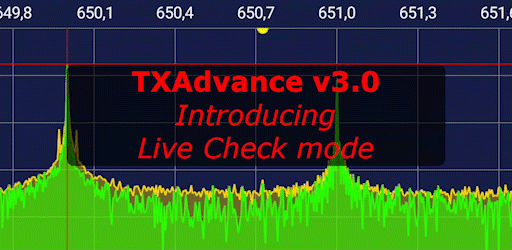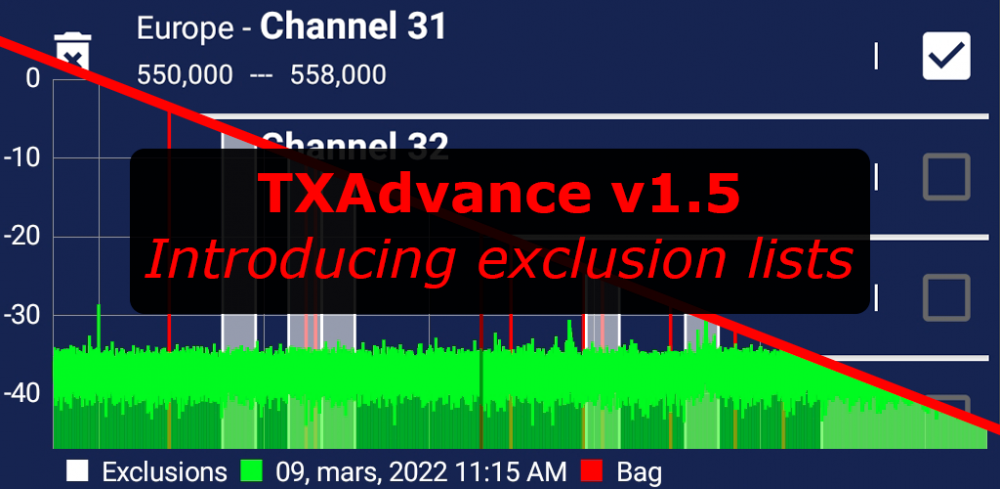
Compasseur
Members-
Posts
31 -
Joined
-
Last visited
Content Type
Forums
Gallery
Store
Everything posted by Compasseur
-
No, not much difference. If you already have a RTL-SDL Blog V3 or a Nooelec NESDR SMArt (v4 or V5), it is not worth getting a RTL-SDR Blog V4. The Airspy Mini is the real improvement.
-
Hi Derek, I mostly use the Airspy now. The HackRF is noisier but if you need its extra features (like if your are a Ham radio enthousiast or if you want to experiment more with RF) it could make sense ; it is also much bigger than the Airspy or the RTL-SDR.
-
The RTL-SDR seems to be higher because it has a lower dynamic range than the Airspy mini. The hackRF is lower because it is abit less sensitive. Also, the applid gain are not exactly the same. I tried to get them as close as possible but they don't all work the same way.
-
I am waiting too for Apple to allow the use of USB devices on their iOS products... Why can't you run Wingman ? Which tablet are you using ? I can run Wingman on my Samsung Galaxy Tab A9+ with Android 14 fine.
-
Hi, Here is a brief video about the latest TXAdvance update (v7.0), which introduces compatibility with new SDR hardware for much faster scan and wider bandwidth. Thanks! More infos: https://www.compasseur.com TXAdvance-SDR-comparison.mp4
-
Sorry it took a bit of time but export/import of exclusions is now here!
-
RF & TX management Android app – looking for beta testers
Compasseur replied to Compasseur's topic in Manufacturers & Dealers
Thank you! -
Then it might be the USB port not providing enough current for the SDR. Kind of half OTG.
-
When you plug a USB stick, can you open it from your tablet? Otherwise, many users are using Samsung Galaxy tab A serie with success. The A7 Lite seems to be quite popular.
-
Your dongle and cables look good. I am suspecting the tablet ; many unbranded, low cost tablets claim to have OTG although they do not have it. you can try 2 things : -look for an OTG tester app on the app store and check if there is OTG, -download this app https://play.google.com/store/apps/details?id=com.mantz_it.rfanalyzer&hl=fr&gl=US and see if it works.
-
Hi, what phone, dongle and OTG cable are you using?
-
Hi Paul, You buy the app through your Google Account. Therefore, any device which uses this Google account can download and use bought apps. So you can use TXAdvance on both your phone and tablet at the same time without problem.
-
In TXAdvance, you can create a custom TX at whatever frequency you want. When you are on the TX edit screen, in brand, go at the bottom of the list and select "CUSTOM". Change the low and high frequency limits to the walkie bandwidth. Then you can select the walkie frequency for this custom TX and its potential intermodulations will be taken into account.
-
Still in the list but thanks for reminding me. I'll bring it up!
-
Hi, it is already on the to-do-list. Thanks!
-
TXAdvance v5 Introducing TX monitor : keep track of all your TX by continuously scanning them. For each TX, observe the RF noise within a 1 MHz bandwidth and the 100 most recent RF level measurements.
-
Hello Marvin, Can you try to download RFAnalyzer : https://play.google.com/store/apps/details?id=com.mantz_it.rfanalyzer&hl=fr&gl=US and check if it works with your SDR dongle. You should not need to go in developer mode. If it does not work, I suspect that the tablet does not have OTG despite claiming so. This would not be the first cheap Chinese tablet I hear about with this issue. You can also contact me by MP or email : thecompasseur (at) gmail.com
-
Hi everyone, I would like to introduce a new feature in the TXAdvance app : TXAdvance Scan Exchange (TASE). It is a collaborative worldwide map of RF spectrum scans. Scans are uploaded from TXAdvance and can be downloaded and imported by anyone. The scans are precisely geotagged and time-stamped by the phone/tablet and have a 5kHz resolution in any band from 50 to 1300MHz. More infos there : https://www.compasseur.com/txadvance-scan-exchange-tase/ And the app is there : https://play.google.com/store/apps/details?id=com.compasseur.txadvance Thank you.
-
Hi Daniel, I am glad that the auto mode worked well ! About it, the app does not take into account TX specific deviation but has a general settings TX bandwidth (and also IM bandwidth). This setting will affect the bandwidth of a frequency on the charts (so the red line representing TX), the number of "orange" dots in the frequency list (so the frequencies considered too close to an already taken (red) frequency and the auto mode. The auto mode will take every possible frequency for a TX (so the "frequency step" settings in the TX setting will affect the auto mode, especially the time it takes), and give it a rate. The higher the rate, the worst the frequency is considered ; for example frequencies which are already occupied by another TX or are at a 2T3O intermod will get a very very high rate. For every frequency, the rate will include the surrounding frequencies (the number of surrounding frequencies is determined by the TX bandwidth setting), so the closer you are to an intermod the higher the rate will be, but a 2T7O will not increase your rate as much as a 2T3O... And of course, the noise value of every frequency (and its surrounding frequencies) is also taken into account. Also, the surrounding frequencies are always with a 5kHz resolution like the scans are (and thus do not depend on the "frequency step"). I hope that it clarifies a bit how the auto mode works. Hi Fred, Thanks a lot for the feedback. Indeed you are right, all OTG were not created equal and some can be sensitive. I would recommand to put the phone/tablet and SDR dongle on a table or something so that they do not move while scanning.
-
Thanks Fred, and nice view! Here are also a nice view and pretty clean spectrum from not very far... Hi Daniel, I am not sure I completely follow you. You need to first set up your scan limits, let's say from 470 to 694. So any frequency below 470 or higher than 608 will not be scanned but can still be selected for a TX (you will just not know the frequency content in dBFS) then set your TX frequencies limit : you can keep the default one or in the case of MCR54, set them up so that they represent 32MHz. That will make sure the app only presents you with 32MHz worth of bandwidth frequencies. You can then add exclusion lists from 608 to 614 for example (I believe this band is forbidden in the US) and any other you need. The frequencies in exclusion lists will also be kept out of the list of frequencies for every TX. That can also be useful if you have to share the RF spectrum with other people. As for the frequency tables from the manufacturers, I don't think I will as the point of app is that you don't really need it anymore. But, you can also work the other way around and set up your TX/RX and then check if everything is fine thanks to the app. Sorry if I didn't get your point and thus did not answer right. Please tell me if that's the case ! Hi Soundflowers, Thank for getting the app. At the moment it is not possible but that is on my list.
-
Hi Daniel, To work with the MCR54 and its 32 MHz window, i recommend at the creation of your TX list to modify the low and high frequency limits of your first TX so that it has a bandwidth of 32 MHz. You only have to do it once for the first TX. When you add another TX, it will get the specifications of the last added TX. Exclusion lists are list of frequencies to avoid. So the frequencies in those list will be excluded from the list of available frequencies for any TX and from the auto mode. They will be scanned though and you can bypass them by manually entering a frequency for your TXs. I need to find an easier solution for those MCR54. I'm open to any suggestion. Hi Fred, From the receiver side, the length of the antenna is not as important as from the transmitter side. Of course it will be better to have the exact length for every band but if your antenna is tuned to the center of 470-694 MHZ, the app will detect any frequencies which could be problematic for our use in this band. You will even detect radio stations frequencies at 90-100 MHz or your car keys at 434 MHz.
-
-
TXAdvance v2.00 update : NEW FEATURE : Import/export of scans and/or TX lists for back up or sharing, Added Lectrosonics Block23-EU and IFBT4-VHF (users requests), Fixed a few minor bugs.
-
Hi Derek, Yes recent phones will definitely provide more power. I have a beta tester and now a few users with Pixel phones and it works fine. Alternatively, I know that some of those "powered" OTG can be tricky. You have to try different orders, like : 1) plug the power, then the phone, then the SDR 2) plug the phone, then the SDR, then the power ...... When and if you find the right one, remember it ! Keep me(us) inform please.
-
TXAdvance v1.5 update : Introducing exclusions lists : set up list of frequencies to avoid Added Sennheiser EK1039 and Leicozic SR2050 in the database (user request) Small bug fixes



